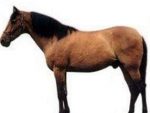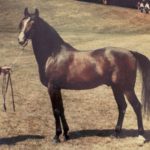Poney du Logone
The Poney du Logone is a breed of ponies that originated in the African countries of Chad and Cameroon, and were domesticated for the first time by the Mousseye tribe. Used extensively for transportation, these are strongly-built equines that were known for their endurance and hardiness. With the population rapidly going down, efforts have been taken to prevent this breed from getting extinct.
Poney du Logone Pictures
- Poney du Logone
- Poney Mousseye
Quick Information
| Also Known As | Kirdi, Lakka, Mbaï, Pagan, Poney de la Kabia, Poney Hoho, Poney Mousseye, Poney Musey, Sara |
| Behavioral Characteristics | Friendly, submissive, easy to handle, willing to work |
| Physical Traits | The profile is slightly convex with a head that is well-proportioned (but not bulky & massive, as is often mistaken); they have intelligent eyes, small, erect ears, and wide nostrils while the neck is thick and short; they have short and strong legs and thin hooves |
| Coat Colors | Bay (primary color); bay roan, chestnut, chestnut roan and gray are also found |
| Height/Size | 12 hands (average for adult studs/stallions and mares) |
| Weight | Light |
| Health Problems | Generally healthy with no known diseases |
| Type | Working Pony, General Riding Pony, Endurance Pony |
| Uses | Hunting, Military, Currency, Transportation |
| Ancestors (Bloodlines) | Barb (hypothetic) |
| Popular Traits | Multi-talented, easy trainability, excellent in running, durable |
| Feeding/Diet | General horse diet including hay, grass, grains, etc. |
| Country of Origin | Africa (Chad, Cameroon) |
History and Development
Some researchers believe that, the Poney Mousseye originated from the genes of the powerful Barb horse breed, but evolved as a shorter version because of the shortage of decent forage around their range. Whichever way, this breed was developed by the flood-plain of the Logone River in the south-western regions of Chad, and in northern Cameroon. They were the horses of the local Marba-Musey people, who were known for rearing and domesticating small horses.
In 1926, the Logone Pony was described for the first time, even though it was recorded exactly a century back (i.e. in 1826). However, because of the lack of well-planned breeding programs and rapid mechanization of transport systems, the population of this pony, by and by, is going down conspicuously in Cameroon. Though, the population was considerably static in Chad, and was listed by the FAO as “not at risk”.
In 1986, the government of Cameroon initiated an Equine Program in order to protect the breed from going extinct. An initiative to develop a horse industry in Cameroon had also been undertaken.
Adaptations
The areas around the Logone River, where these small horses were developed, were infested by tsetse flies, whose bites induce the deadly disease known as ‘sleeping sickness’ or ‘trypanosomosis’. Interestingly, these equids have shown to develop resistance to the disease.
Interesting Facts
- They got the name ‘Mousseye’ or ‘Musey’ pony after the ‘Marba-Musey’ or ‘Mousseye’ tribe in southeastern Cameroon who raised them.





